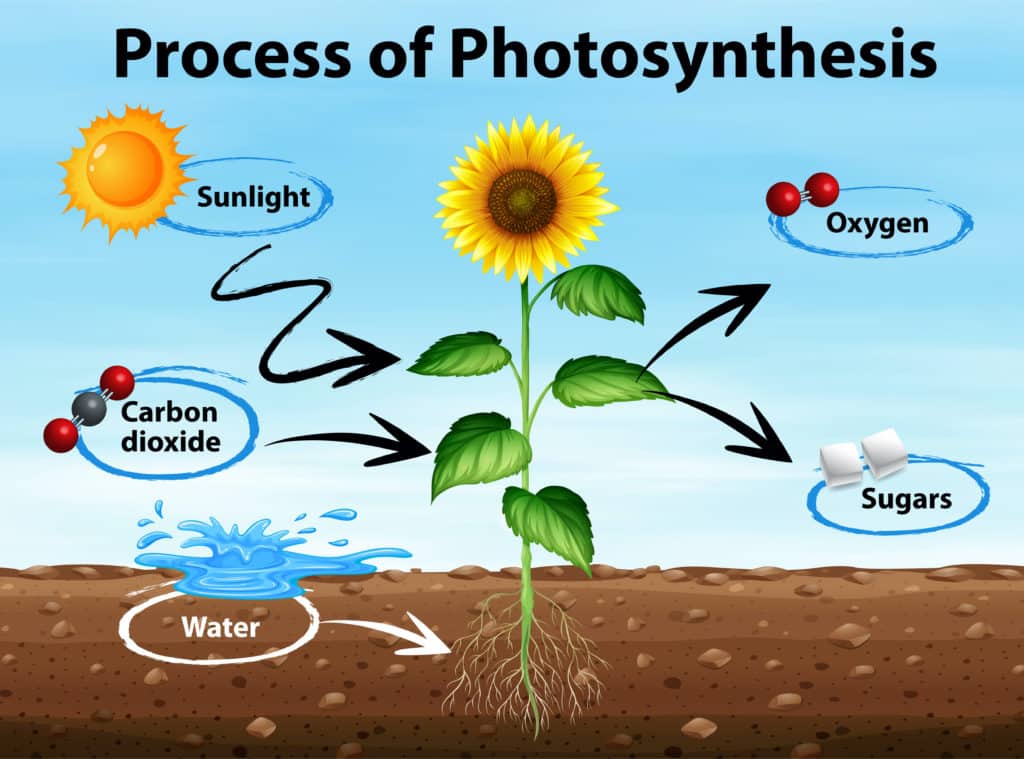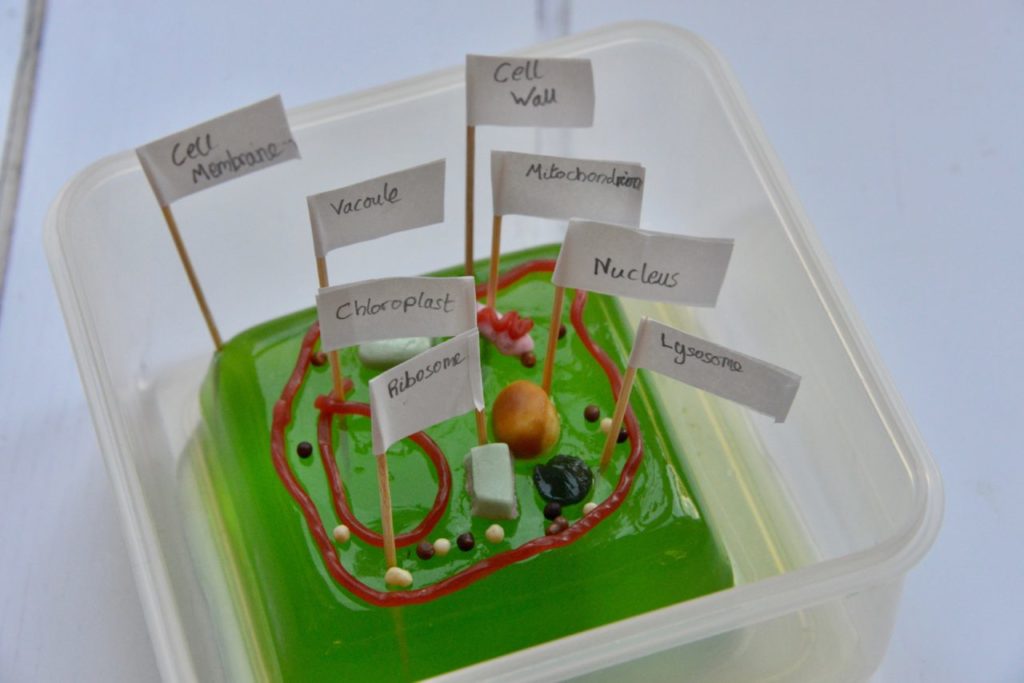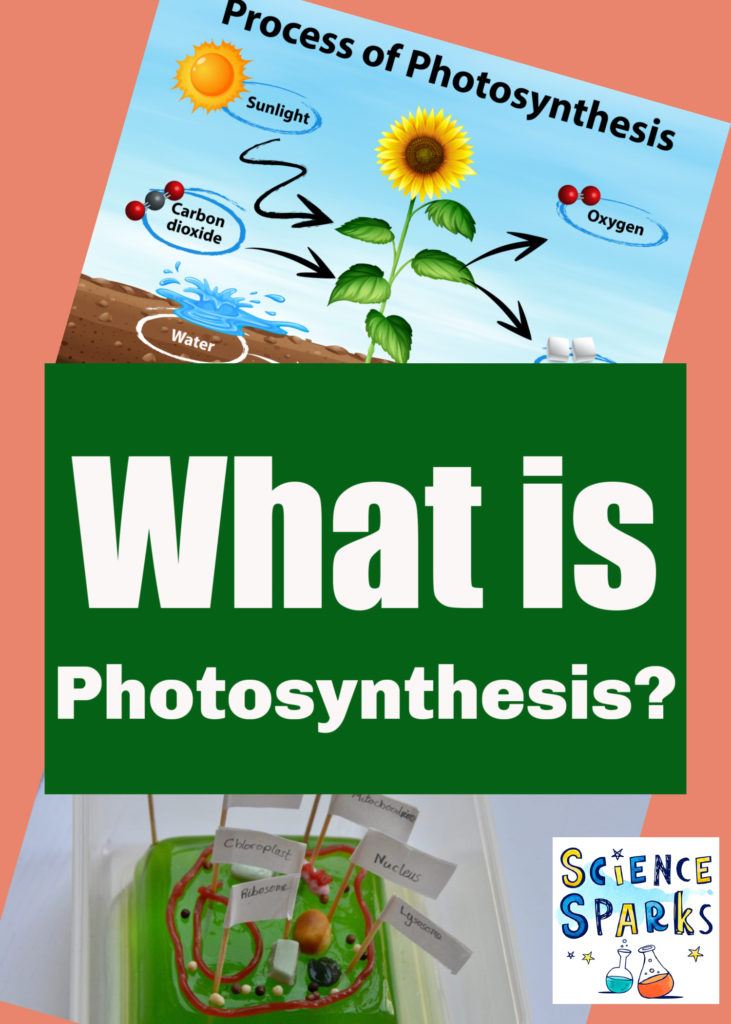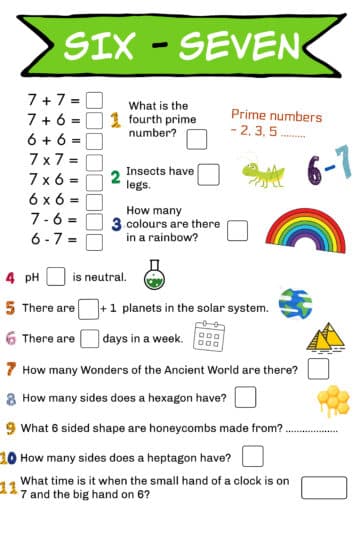Green plants make sugar for growth by a process called photosynthesis. Photosynthesis is a process where light energy is converted to chemical energy in the form of sugars. Photosynthesis provides the main source of oxygen in the atmosphere and is essential for almost all life on Earth.
Photosynthesis made simple
Plants use sunlight, water, and carbon dioxide to create oxygen and energy in the form of glucose.

The glucose molecules created by photosynthesis act as fuel for cells and are used for cellular respiration and fermentation.
Photosynthesis Equation

Where does photosynthesis happen?
Photosynthesis takes place in chloroplast cells, which contain a substance called chlorophyll. It is chlorophyll, which gives plants their green colour.
Chloroplasts are one of the organelles in a plant cell. We made a jelly model of plant cell to learn about organelles and plant cell structure.

Sunlight is also needed to make chlorophyll. If plants are kept in the dark, they can't make chlorophyll and will have yellow leaves! You can see this in our multicoloured cress caterpillar.
What affects the rate of photosynthesis
Four factors affect the rate of photosynthesis. The faster it occurs, the more the plant grows.
Light – the more light there is, the faster photosynthesis occurs.
Water – lack of water slows photosynthesis down.
Temperature – photosynthesis works best at around 30 degrees Celsius.
Carbon dioxide levels – photosynthesis is faster if there is more carbon dioxide in the air.
Plants make the energy to grow through a process called respiration. This uses the sugar produced by photosynthesis and oxygen.
How are leaves adapted for photosynthesis?
Leaves are green as they contain lots of chlorophyll, which absorbs sunlight.
They are thin and have a large surface area. This means they can absorb a lot of sunlight, and gases such as oxygen and carbon dioxide can pass in and out of the leaf easily.
Leaves have veins - xylem and phloem, which transport water, minerals and sugars around the plant.
Do only plants photosynthesise?
No!
Plants, algae, and some types of bacteria use photosynthesis to create energy.
A large percentage of the Earth's oxygen comes from phytoplankton in the oceans, which contain chlorophyll and use photosynthesis to create energy.
What is chlorophyll?
Chlorophyll is a green pigment which absorbs energy from blue and red light waves and reflects green light waves, which is why plants look green!
Chlorophyll in a plant is found in an organelle called a chloroplast. This is where photosynthesis occurs.

Why is photosynthesis important?
Photosynthesis also allows plants to make energy for growth and repair, and it has an important ecological impact.
Plants incorporate the carbon from carbon dioxide into organic molecules ( carbon fixation ). This creates a carbon source for animals who cannot create their own and also removes carbon dioxide from the air, slowing down the rate at which it builds up in the atmosphere.
Photosynthesis also creates oxygen, which is needed for most life on Earth!
Do you have more questions? You might find the answers in my collection of science questions for kids.

Last Updated on March 27, 2025 by Emma Vanstone




Leave a Reply